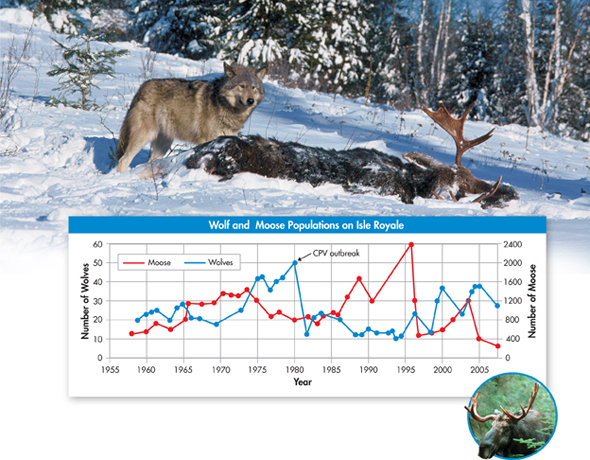
FIGURE 5–8 Moose-Wolf Populations on Isle Royale The relationship between moose and wolves on Isle Royale illustrates how predation can affect population growth. In this case, the moose population was also affected by changes in food supply, and the wolf population was also impacted by a canine parvovirus (CPV) outbreak.
d▸ Herbivore Effects Herbivory can also contribute to changes in population numbers. From a plant's perspective, herbivores are predators. So it isn't surprising that populations of herbivores and plants cycle up and down, just like populations of predators and prey. On parts of Isle Royale, large, dense moose populations can eat so much balsam fir that the population of these favorite food plants drops. When this happens, the moose may suffer from lack of food.
▸ Humans as Predators In some situations, human activity limits populations. For example, humans are major predators of codfish in New England. Fishing fleets, by catching more and more fish every year, have raised cod death rates so high that birthrates cannot keep up. As a result, the cod population has been dropping. Is there any way to solve the problem? Think of predator-prey interactions. The cod population can recover if we scale back fishing to lower the death rate sufficiently. Biologists are studying birthrates and the age structure of the cod population to determine how many fish can be taken without threatening the survival of the population.
BUILD Vocabulary
ACADEMIC WORDS The verb fluctuate means to “rise and fall as if in waves.” A population that fluctuates is unstable: Its numbers go up and down irregularly.
Table of Contents
- Formulas and Equations
- Applying Formulas and Equations
- Mean, Median, and Mode
- Estimation
- Using Measurements in Calculations
- Effects of Measurement Errors
- Accuracy
- Precision
- Comparing Accuracy and Precision
- Significant Figures
- Calculating With Significant Figures
- Scientific Notation
- Calculating With Scientific Notation
- Dimensional Analysis
- Applying Dimensional Analysis




